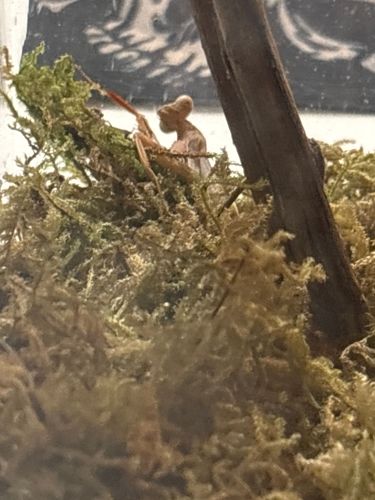Orchid Mantis
Scientific Name: Hymenopus coronatus
Order & Family: Order: Mantodea, Family: Hymenopodidae
Size: Females typically range from 6 to 7 cm (2.4 to 2.8 inches) in length, while males are much smaller, around 2.5 to 3 cm (1 to 1.2 inches).

Natural Habitat
Tropical rainforests of Southeast Asia, particularly in Malaysia and Indonesia. They are found on or near flowering plants, especially orchids, which they mimic.
Diet & Feeding
Strictly carnivorous, feeding on a variety of small insects such as flies, butterflies, moths, and other pollinators that visit flowers. They use their spiny forelegs to grasp and hold prey.
Behavior Patterns
Orchid mantises are ambush predators, using their remarkable camouflage to blend seamlessly with orchids. They typically remain still, swaying gently to mimic flowers, until unsuspecting prey comes within striking distance. They are known for their striking sexual dimorphism, with females being significantly larger than males. After mating, the female may sometimes consume the male. Nymphs mimic ants for the first few instars.
Risks & Benefits
Potential risks to humans: None, they are not venomous and do not bite unless severely provoked. Benefits to ecosystem: They act as natural pest control agents by preying on various insects, helping to maintain ecological balance. They are also popular in the pet trade due to their unique appearance and relatively easy care.
Identified on: 8/17/2025